In this article, we will discuss the basic building blocks of the Fire Detection & Alarm System (FDAS). Before selecting a fire detection system, it is a must to have the information related to process and engineering and the key areas for its installations as well.
An overview of the fire detection and alarm system is given below.
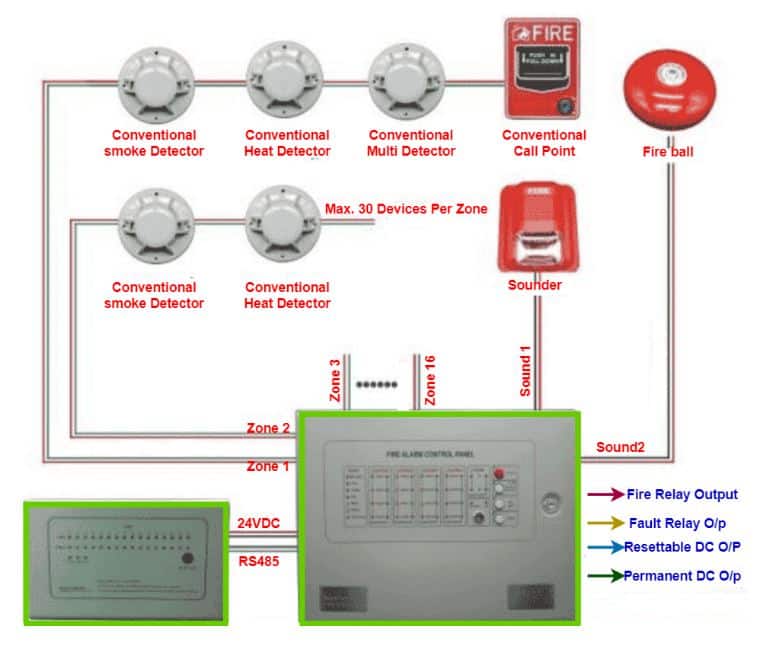
Applicable Codes and Standards
The below-mentioned codes and standards provide the guidelines for the installation of the fire detection and alarm system. These standards need to be followed for designing or implementing a Fire Detection & Alarm System.
| Code & Standard | Description |
| NFPA 72: 2019 | National Fire Alarm Code |
| IS 2189:2008 | Code of Practice for selection, installation, and maintenance of Automatic Fire Detection and Alarm System |
| IS 2175:1988 | Heat-sensitive fire detectors for use in automatic fire alarm systems. |
| IS 1881:1998 | Indoor installation of sounding system |
| BS EN 50288 7:2005 | Multi-element metallic cables used in analog and digital communication and control, Part 7- Sectional specification for instrumentation and control cables |
Selection Criteria of FDAS Components
| Type Of Detector/ Device | Area/ Environmental Conditions |
| Fire Alarm Control Panel | Control Rooms |
| Repeater Panel | Control Rooms, Substations, And Remote Locations |
| GUI With PC | Control Room |
| Multisense Detectors | Rack Rooms & Cable Cellars |
| Heat Detectors | Compressor Areas, Oil & Gas Storage Areas, Store Rooms |
| Beam-Type Smoke Detectors | Oil & Gas Storage Areas, |
| Chlorine Gas Detector | In Chlorine House |
| H2S Gas Detector | In Sulphur Plant Or In Plants Where Sulphur Is Present |
| Hydrogen Gas Detectors | Battery Room And Hydrogen Plant |
| Manual Call Point | All Areas In Industry |
| Ex-Proof Manual Call Point | Hazardous Areas |
| Linear Heat Sensing Cable | Cable Cellars |
| Control Module / Monitor Module | Required For Actuating Other Devices Like Hooter & Other Systems |
Fire Alarm Control Panel (FACP)
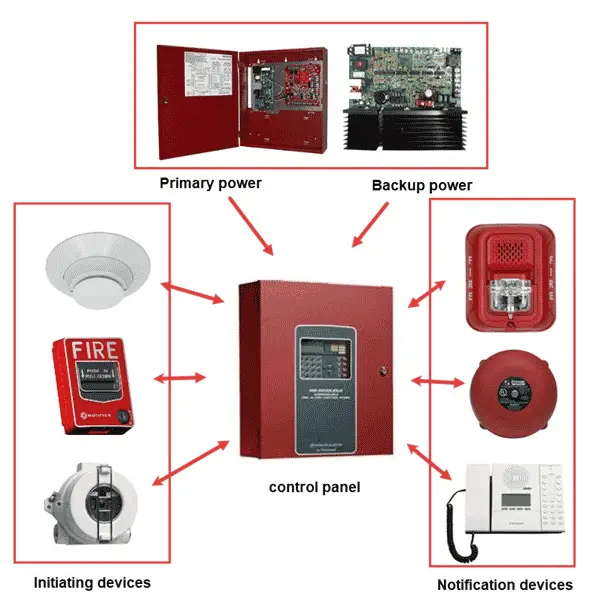
Fire Alarm Control Panel(FACP) is the main control panel of any Fire & Gas detection System. The controller is present in the FACP. The FACP has a display, various keys, or a keypad for functions like reset, acknowledge, and silence buttons. Whenever any device connected to the FACP actuates or goes faulty, the FACP senses that faulty signal, and then it displays and buzzes the alarm on the FACP panel. Accordingly, FACP actuates the hooters and flashlights. All loops going into the field are connected to the FACP.
Fire Detection & Alarm System- Fire Alarm Repeater Panel
Whenever there is a long distance between the FACP and the F&G devices, a repeater panel is used. The repeater panel repeats the signals by increasing the signal quality and then sends it to the connected network. The repeater panel has a display and various keys or a keypad.
Graphical User Interface (GUI) with Workstation
Graphical User Interface (GUI) is software for accessing the programming part of the F&G system. Every device in the loop is controlled by the main controller’s programming. This programming is done using the GUI. Also, an audio-visual representation of the whole F&G of the plant is shown in this GUI. Whenever any device goes into an alarm state or goes faulty, the operator can easily see the status of that device on the GUI.
Fire Detection & Alarm System- Multi Sense Detector
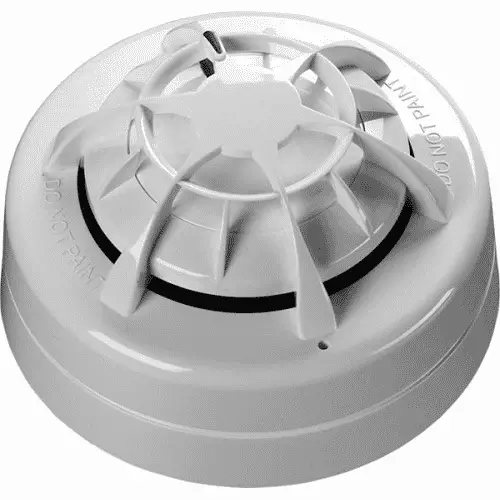
The Multi Sense detector detects both the smoke and the heat. They have a thermistor for detecting heat. The detectors are loop powered and hence they have their own unique address. Each detector has a microprocessor circuit that detects errors or alarms or any other faults.
Fire Detection & Alarm System-Manual Call Point (MCP)
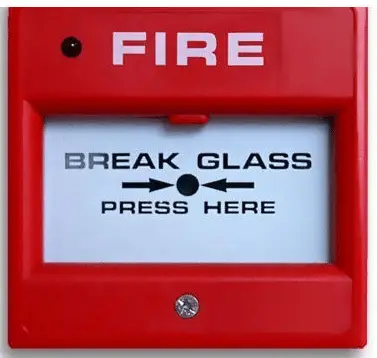
The Manual Call Point is the device that actuates on pressing. We generally use them in case of emergency. Whenever an MCP is pressed, an alarm is generated, and accordingly, action is taken for rescuing the person. MCP is the most important F&G device in case of an emergency. The MCPs are of two types. One has a glass and the other is a resettable type. In glass type MCP, every time after actuation, the glass needs replacement as glass breaks after actuation.
Hooter
Hooter starts as soon as it receives a command from the FACP. In case of actuation of any F&G device, the hooter is supposed to hoot to alert nearby people. The hooters are installed in almost every area.
Monitor Module
The Monitor module monitors the condition of all the devices. Whenever any device goes into fault mode or alarm, the monitor module detects it. The monitor module continuously detects the voltage levels in the loop. When the monitor module senses any change in the voltage (voltage is having imposed digital signal), it actuates an appropriate device.
Control Module
The control module is a kind of relay. This module actuates devices like hooters and flashing lights.
Chlorine, H2S, and Hydrogen Gas Detectors
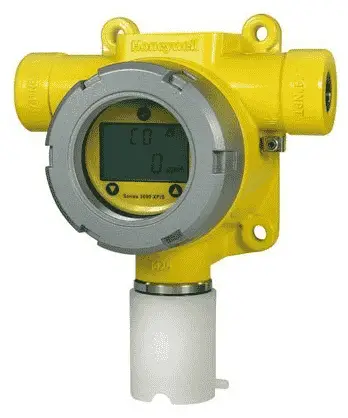
Chlorine, H2S, and Hydrogen gas detectors are used to detect the respective gas leakages in the plant.
Fire Detection & Alarm System–Beam Type Smoke Detectors
The Beam detectors are installed on the roof of certain buildings or in certain areas at the top. The height is generally more than 10 meters. The area between the beam-type smoke detector should be clear.
Fire Detection & Alarm System- Heat Detector
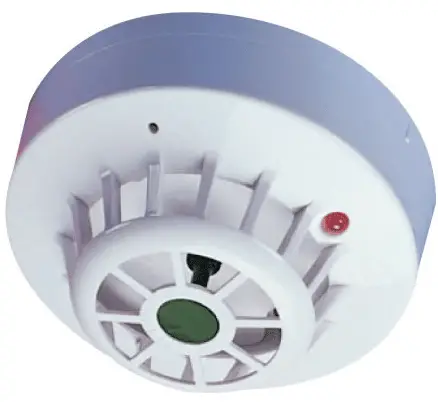
The heat detectors are used to detect the heat. Heat detectors are of two types. One actuates when the temperature goes above a certain temperature. While the other type of heat detector gives an alarm when the rate of temperature increase is high above a defined level.
Fault Isolator Module
The Fault Isolator Module(FIM) immediately isolates the loop devices for maintenance jobs or during a failure. Fault Isolator Module is provided in every loop for every 20 devices or detectors. FIM is like an intermediate terminal block to isolate a part of the loop for checking or maintenance purposes.
very good WEBSITE